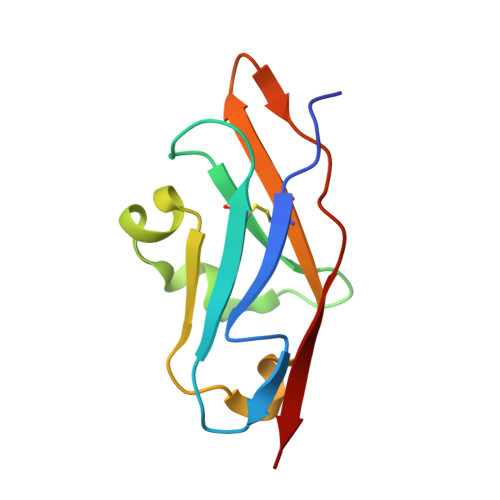LILRA3 binds both classical and non-classical HLA class I molecules but with reduced affinities compared to LILRB1/LILRB2: structural evidence
Ryu, M., Chen, Y., Qi, J., Liu, J., Fan, Z., Nam, G., Shi, Y., Cheng, H., Gao, G.F.(2011) PLoS One 6: e19245-e19245
- PubMed: 21559424
- DOI: https://doi.org/10.1371/journal.pone.0019245
- Primary Citation of Related Structures:
3Q2C - PubMed Abstract:
Structurally, Group 1 LILR (Leukocyte Immunoglobulin (Ig)-Like Receptor, also known as Ig-like transcripts, ILT; Leukocyte Ig-like receptor, LIR; and CD85) members are very similar in terms of the HLAIs (human leukocyte antigen class I molecules) binding region and were hypothesized that they all bind to HLAIs. As one of the Group 1 LILRs, LILRA3 is the only secretory LILR and may greatly control the inhibitory immune response induced by LILRB1, LILRB2, and other HLA-binding LILR molecules like LILRA1. Nevertheless, little was known about the binding of LILRA3 to HLAIs. In this report, we present the crystal structure of the LILRA3 domain 1 (D1) and evaluate the D1 and D1D2 (domain 1 and domain 2) binding to classical and non-classical HLAIs using BIAcore® surface plasmon resonance analysis (SPR). We found that LILRA3 binds both classical HLA-A*0201 and non-classical HLA-G1 but with reduced affinities compared to either LILRB1 or LILRB2. The polymorphic amino acids and the LILRA3 D1 structure support this notion.
- CAS Key Laboratory of Pathogenic Microbiology and Immunology, Institute of Microbiology, Chinese Academy of Sciences, Beijing, China.
Organizational Affiliation:
















